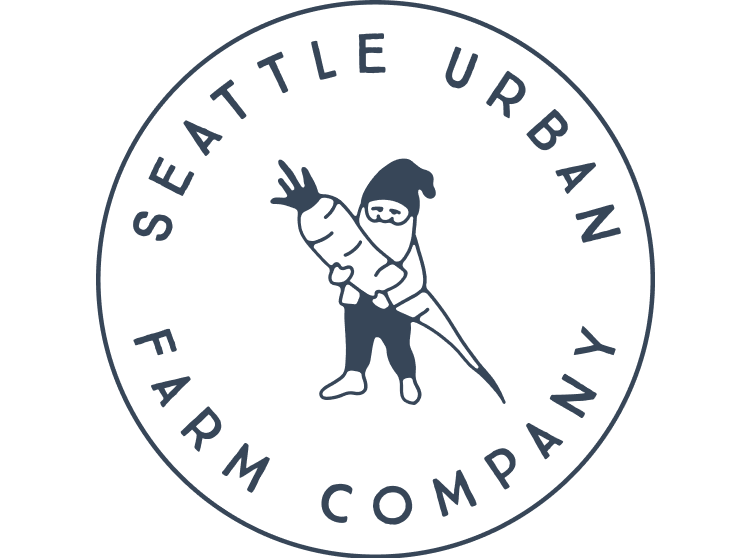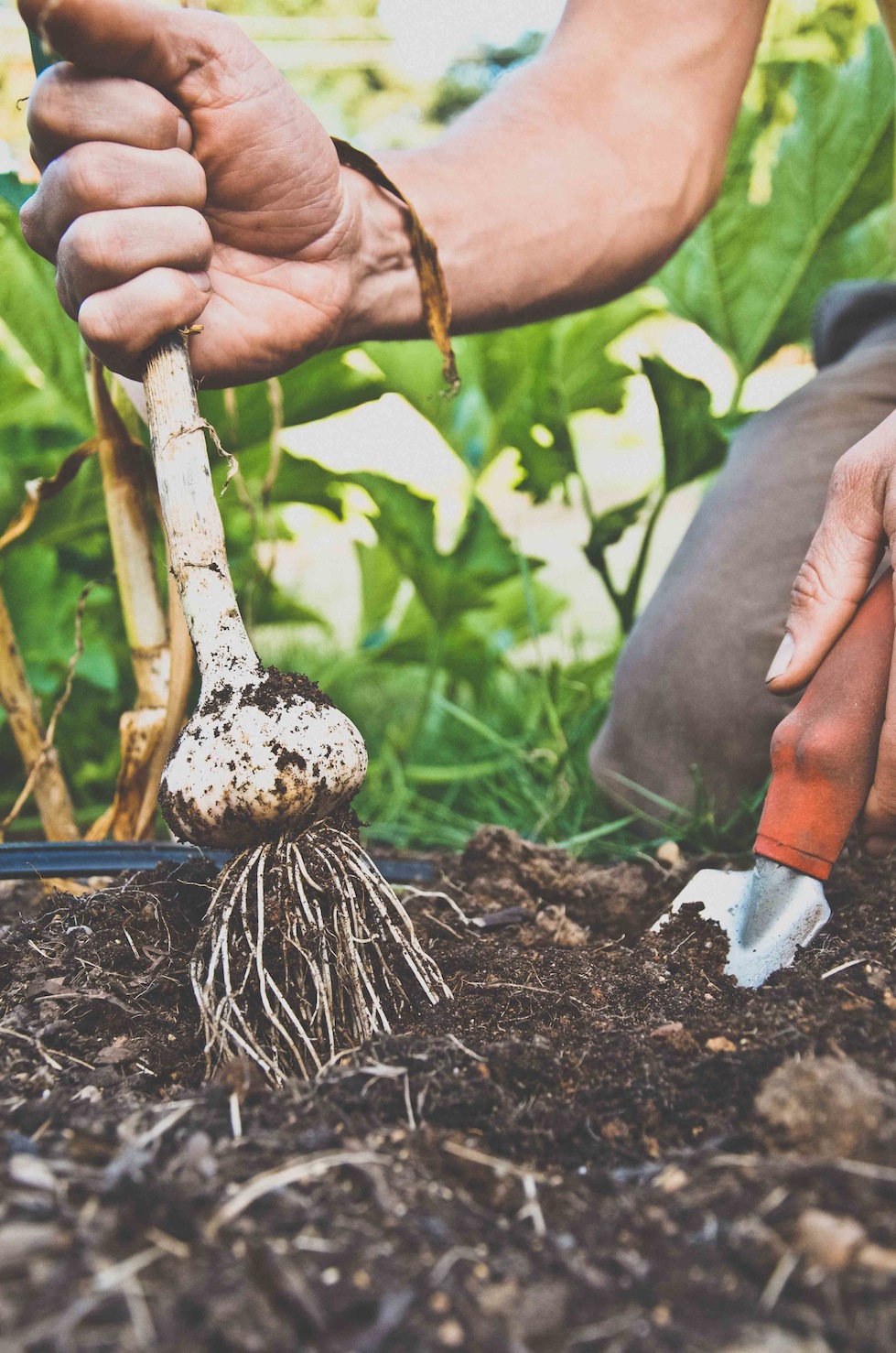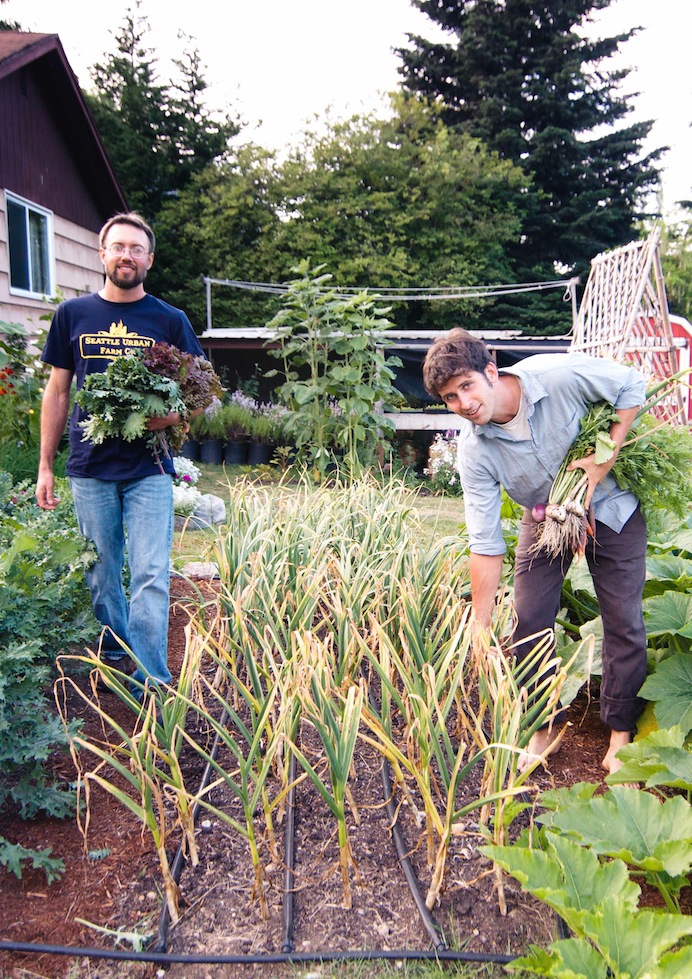Garlic and onions are, in my opinion, some of the most satisfying crops to grow. They are among the first transplants to be tucked into the early spring garden, and are ready to harvest at the onset of peak harvest season, a harbinger of the forthcoming abundance. Luckily the crops are happy to be stored away for us to enjoy during less bounteous times of year.
These are simple crops to harvest. In fact, with both crops, the less you do to the harvested plant, the longer and better they will store. Both crops are harvested by lifting entire plant out of the ground with a spade, fork or trowel (or by hand). The following tips will help you know when your crops are ready to harvest and how to store them:
Garlic:
Once half of the stems have turned brown (half should still be green) and started to dry out, the garlic can be harvested. If you harvest the plants too early, the cloves may not be fully formed. Alternately, if you wait until the entire plant has died back, the cloves will start to separate, resulting in loose heads that won’t store as long.
You can start cooking with your garlic the minute you pull it out of the garden, but if you’d like to store some or all of your harvest, read on...
Do not wash your garlic with water, simply knock off any large clumps of dirt that may be clinging to the plant and the roots. Do not remove the cloves from their papery wrapping.
Hang the plants, fully intact, in a warm, dry, dark place for several weeks to cure. This will increase the storage life.
After 4-6 weeks of curing, the garlic stalk and root can be trimmed back to so that the bulb resembles one that you would buy at the store or farmers market. This trimming of the stalk and roots is not necessary, but does make using the garlic a little easier when it comes time to cook with it. The smaller heads also require less storage space.
Types of Garlic: Hardneck vs. Softneck: Two distinct types of garlic that are commonly grown by the home gardener are Hardneck and Softneck garlic. Hardneck has a stiff central stem and fewer and larger cloves. It generally doesn’t store as long as softneck, but is easier to peel and, many people feel, has a better taste. Softneck garlic has a flexible central stem, and the bulbs tend to have many small cloves and thick wrapper skins. Softneck is widely grown because it keeps very well all winter long.
Onions:
- Bulbing onions are ready to harvest once the stems start to turn brown and die back. The tops will start to flop over. A portion of the bulb will usually be above the soil surface at this time.
- Unlike garlic, onions can stay in the garden after they have reached their harvest peak and you can pull them as you need them. Be sure to pull the remaining crop before the first frost, or a heavy rain to help extend the storage life.
- Just like garlic, you can cook with your onions right out of the garden, but if you’d like to store some or all of your harvest, read on…
- Do not wash your onions with water, simply knock off any large clumps of dirt that may be clinging to the plant and the roots. Trim back the roots and pull off any outer leaves that look yellow, or otherwise undesirable.
- Leave plants to cure in a dry sunny spot to cure for 5-7 days.
- Once cured, cut back the stems to about 1 inch above the bulb. If there is still moisture in the stems, let the onions cure in the sun for a few more days- or until the tops are dry.
- Onions store best in a well-ventilated mesh bag
or wire hanging basket
. Hang the bag or basket in a dark, cool location such as a pantry or basement.
Depending on the variety, onions will have different storage capacities. Generally, yellow types store longest, but be sure to read about the varieties you are growing, or planning to grow before deciding which ones to cook with first. If properly cured and stored, it is possible to eat bulbing onions from midsummer through the following spring.






